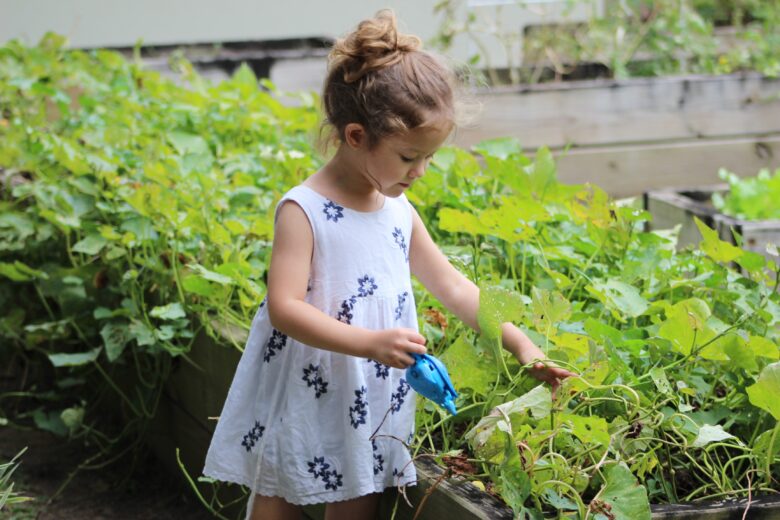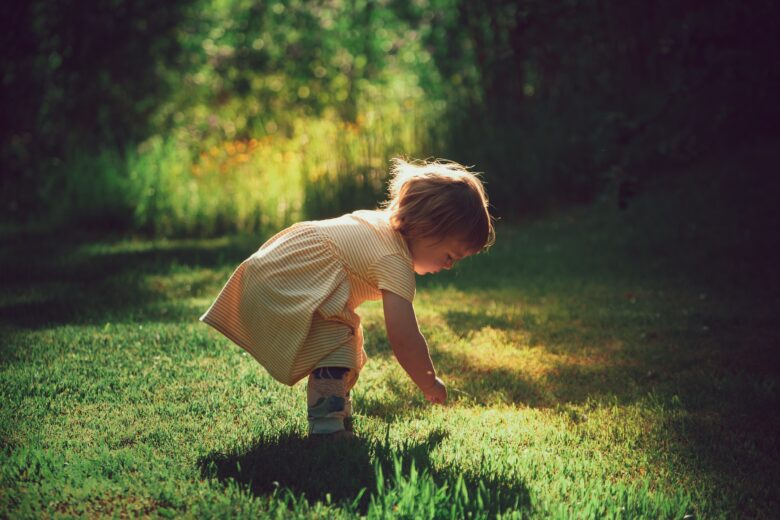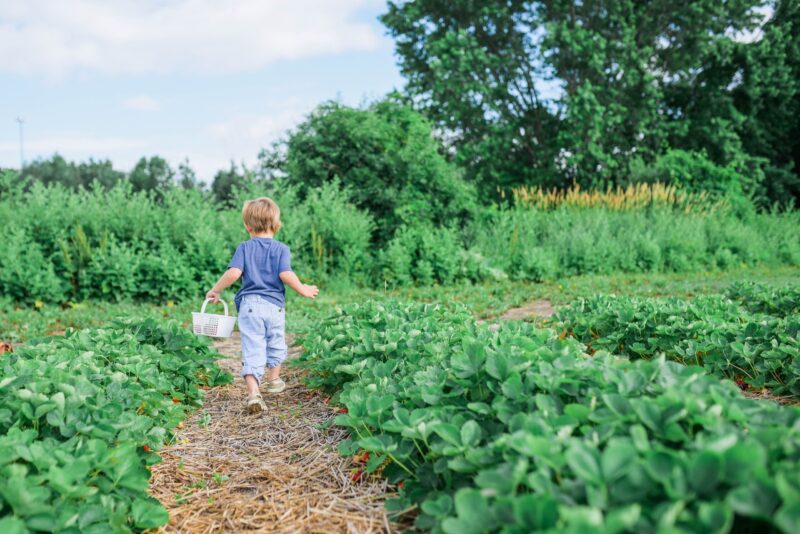Gardening is an engaging yet relaxing hobby for people of all ages, and it’s also associated with a number of health benefits. Children who garden from an early age may be more likely to succeed in science and less likely to experience anxiety and other mental health challenges.
In this article, we’ll take a look at a few of the easiest ways to introduce your child to gardening. Along with keeping both of you healthy, gardening also provides an excellent bonding opportunity. Make sure to check out the top cordless lawn mowers if you want to invest in new gardening equipment.
1. Simplify the Process

Frustration is a big barrier to success in more things than just gardening, so do not overcomplicate the task at hand if you want your children to succeed. Try with some fast growing crops that are easy to plant and then maintain. That way your child will feel a sense of accomplishment early on and experience rewards much sooner.
Some beginner plants to grow as a family that are simple to plant and harvest are lettuce, kale, parsley, basil and baby greens.
2. Give them kid-sized tools.
Every gardener needs a set of high-quality tools and gardening gloves, and children are no exception. Kids especially love things that are their size. The first thing you should do is get them a set of kid-sized tools to help them garden. Children love playing dress up. If you don’t know where to start, first get them gloves, a hat, trowel and watering can. You can also give your budding green thumb a child-size shovel and hoe, along with a durable pair of gloves. Kid-sized tools would also be safer for them to use. When your children are dressed for the part, they will be more excited about getting into the garden.
3. Let Them Explore

Give your kids the opportunity to explore. Let them dig around in the dirt and discover the critters that live in the soil. Kids are naturally curious, and it’s that curiosity that helps them learn the most. Have your children explore different scents and textures of plants, then use this as an opportunity to teach them. You’ll be surprised how much information they absorb.
4. Try a Workshop
New gardeners can learn a lot from the experts, and workshops are a great way to connect with other gardeners. Workshops cover a wide range of topics such as composting or choosing the right plants for your garden.
Some cities offer workshops for kids and families, giving your child a chance to interact with other kids who are interested in gardening. You’ll be able to transfer your new skills to your home garden and watch it grow together.
5. Give Them More Control

Kids love to dig in the dirt. Give them a space of their own to play in. Remember that a little bit of trust goes a long way. Providing your kids with the space to experiment and plant their own seeds will give them a sense of ownership over the garden, says HappyValleySeeds. Try designating a section of your garden for your child to use by indicating it with fun name tags or signs.
Many parents ask if their children want to “help” in the garden, but most kids are more likely to respond to the opportunity to oversee their own space. If you have a large enough plot, consider setting aside a section for your child to manage on their own. Whether you use raised beds, containers, or ground plots, be sure to give each child his or her own separate plot. Keep it very small for young kids. Put their plots right in the middle of the action, with the best soil and light. This will help set them up for success.
Of course, this isn’t to say that you can’t offer or ask for help—just that their role shouldn’t be limited to supporting you. Give them the opportunity to succeed on their own by investing in a set of high-quality gardening tools or even a robotic lawn mower.
6. Eat What You Grow
Enjoying fresh homegrown produce is rewarding and delicious. Let your kids help plan snacks, lunches, and dinners using the delicious fruits, vegetables, and herbs you harvest. You can bet that they’ll be more willing to eat their greens if they knew they grew them from a seed.
7. Don’t Impose

Balancing freedom with oversight is always complicated, but forcing your child to garden tends to backfire. Look for another indoor or outdoor activity rather than requiring them to do something they’re no longer interested in. Giving them space will also make them more likely to return to gardening later on.
On the other hand, your child should understand that gardening is a commitment—not to you as a parent, but to the garden itself. They should be prepared to follow through on that commitment by maintaining whatever they plant throughout the year.
Remember to Be patient. Some kids might show interest immediately and then get distracted 15 minutes later. Sometimes a little watering session might turn into an impromptu sprinkler water park. Try not to stress about it. Remember that the goal is to create a positive memory. Even if they do not carry your passion for gardening into the future, they will look back and remember fun times in the garden with the family.
8. Make a Scarecrow
When all else fails, make a scarecrow. The best time to engage children in gardening is when they’re in the mood for this activity. If their attention wanes, or the garden tasks become boring, let them build a scarecrow. This activity is still a contribution to the gardening effort and adds another layer of interest to the garden scene. It also reminds the child of the importance of the garden crops.
COVID-19-related quarantines have put a variety of social activities on hold, and gardening is an easy way to stay mentally and physically active while also social distancing. These tips will help you spend more time with your child while cultivating their interest in gardening.
For more things to do inside with your children click here to see top crafting tools!

